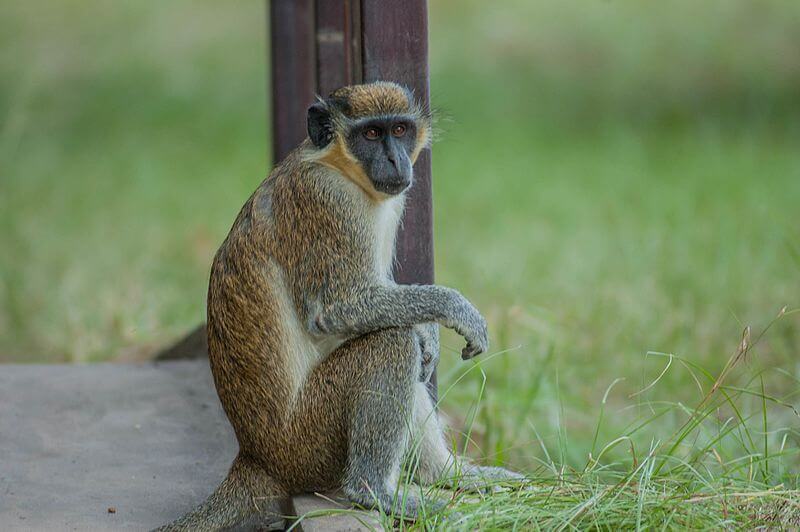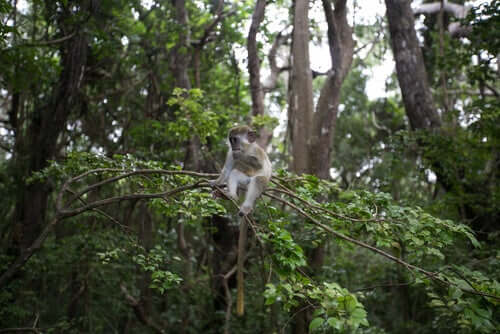The Green Monkey and Its Incredible Way of Communicating


Written and verified by the vet Eugenio Fernández Suárez
The green monkey isn’t a very well known species. But this is quite surprising given that it has an incredible way of communicating and has played a role in modern medicine. In fact, unfortunately, thousands of them have been used for developing vaccines.
Fortunately, this practice is becoming less and less common all the time. As animals are gradually being replaced by cell cultures, this means that they’re less likely to be captured. Although some people keep them as pets in the United States, they’re actually one of the few primates that isn’t currently at risk of extinction.
The green monkey belongs to the cercopithecidae family and gets its name from the greenish tinges of its fur. It turns out that they have a very complex way of communicating. In fact, in many ways, it’s similar to human communication.
The green monkey and their way of communicating
This is one of the best-known examples of animal communication, first studied in the 1980s at Amboseli National Park, Africa. What the researchers saw was somewhat revolutionary for the time. The green monkey had specific alert sounds for each predator.

Researchers documents three specific calls which, in turn, triggered three different strategies. They had warning sounds for leopards, snakes, and birds of prey, each of which was easily distinguishable even for humans.
The researchers also noted that how specific the warning calls were depended on the animal’s experience. Although they were instinctive sounds to make, the ability to recognize danger was a learned process.
This meant that young green monkeys could easily confuse large birds, such as a stork, with a predator and alert the rest of the group as though it were a bird of prey. Gradually, they learn to recognize predators. Eventually, they’re able to distinguish eagles from other birds of prey which are merely scavengers and don’t prey on green monkeys.
Researchers documents three specific calls which, in turn, triggered three different strategies. They had warning sounds for leopards, snakes, and birds of prey, each of which was easily distinguishable even for humans.
Different calls, different responses
These different warning calls trigger different responses. The first response is to look carefully in the direction of the supposed danger. If the predator is a big cat like a leopard, the monkeys will climb to the top of a tree and sit on a high branch which the leopard can’t reach due to its weight.

On the other hand, if a snake is approaching, the green monkeys stand up on their hind legs, ready to jump and escape danger if the snake attacks them. If the predator is an eagle, they’ll keep an eye on the sky and try to get undercover on the ground.
This species also has warning calls for other dangers which are not as well studied but are certainly interesting. Green monkeys even have warning sounds for other dangerous primates, such as baboons or even humans.
This is quite important because, in many parts of Africa, people see green monkeys as a pest. As a result, they have something of a conflictive relationship with humans and, unfortunately, many die due to abuse, dog attacks, or even poisoning.
They had warning sounds for leopards, snakes, and birds of prey, each of which was easily distinguishable even for humans. The researchers also noted that how specific the warning calls were depending on the animal’s experience. Although they were instinctive sounds to make, the ability to recognize danger was a learned process.
This text is provided for informational purposes only and does not replace consultation with a professional. If in doubt, consult your specialist.